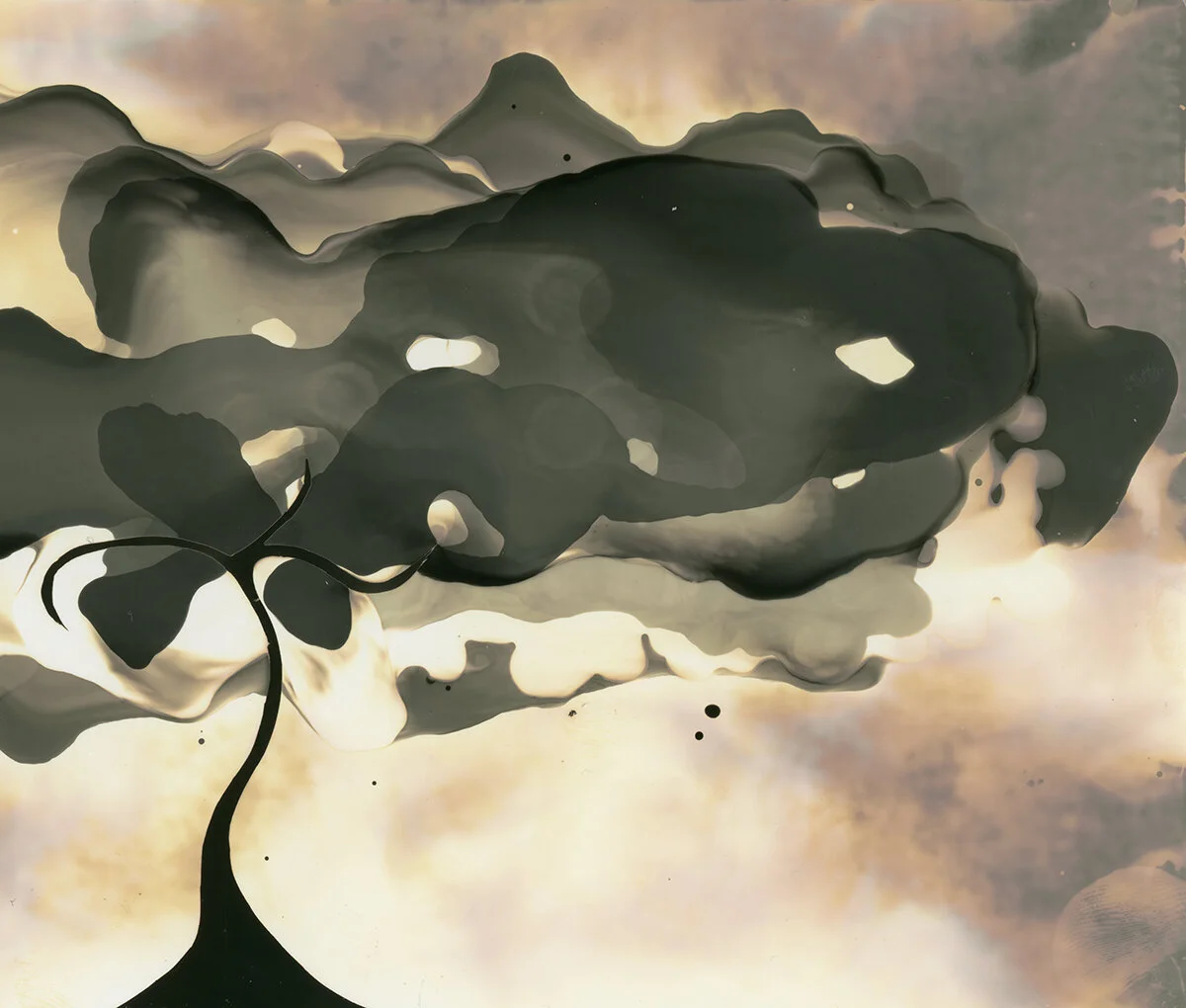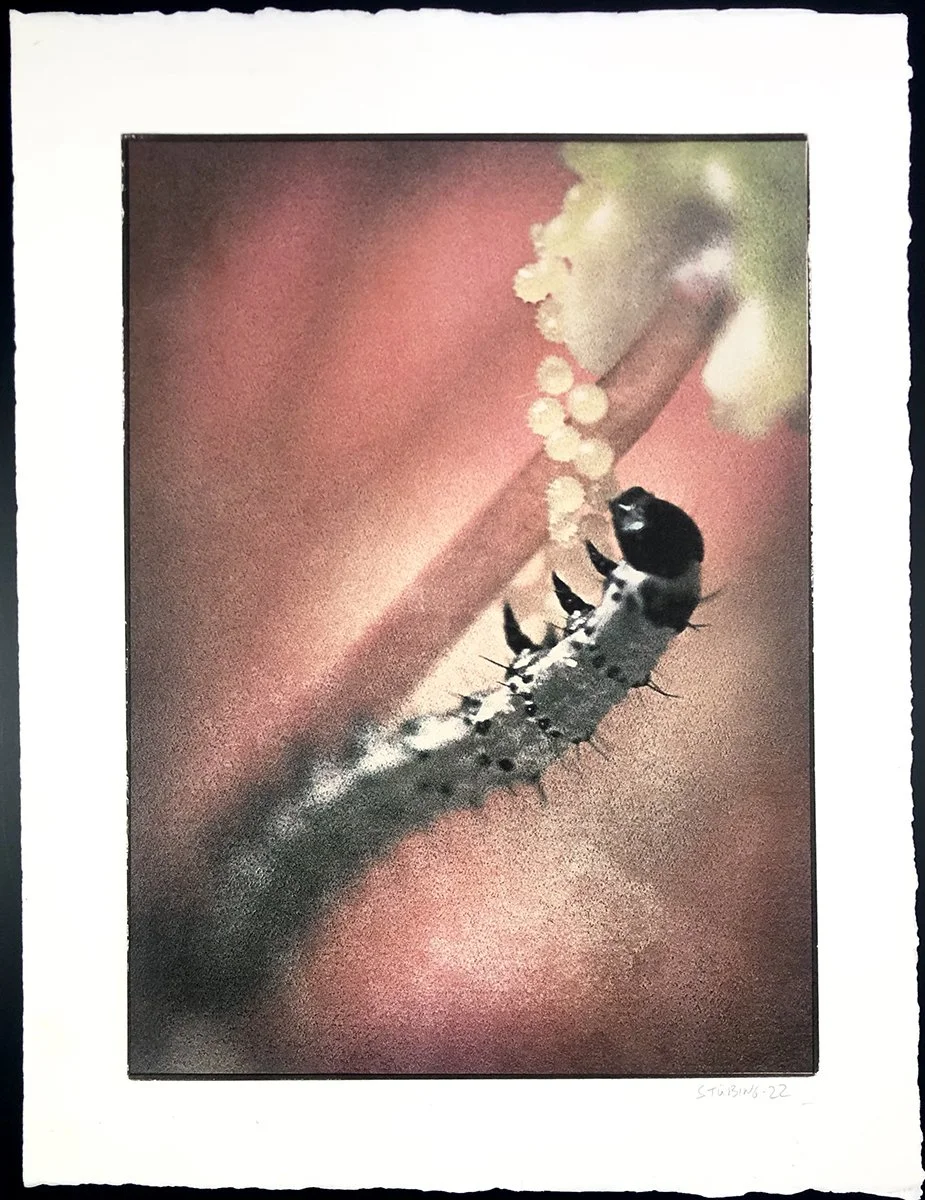Traverse
A column that discovers, investigates and highlights fine art photographic work from an international forum of creatives.
Within this column, I strive to look at photographs and processes that reside outside of the familiar American bubble that we see more often than not. The aim is in examining not simply our similarities and differences, but also the common thread of making photographs in our shared process and goals.
—Michael Kirchoff, Contributing Editor
michaelkirchoff.com | catalystinterviews.com | analogforevermagazine.com
Stübing values the intrinsic artistic qualities linked to the photographic process, where experimentation yields unique and unrepeatable works. This is a reaction to the current state of digitally reproducing photographs and finding meaning in the physicality of participating in the alternative methods of making images. The often encountered “happy accidents” only add to the nuance and enjoyment of it all. In fact, the repetition of the actions inevitably bores him, leading to continually changing processes and introducing modifications through experimentation. Taking a hybrid approach often leads him to a workflow that includes using analog slide film, scanning, digital manipulation, printing, then back to experimental treatments of new negatives, back to scanning again, and finally printing of a final piece. Clearly, there can often be a lot happening behind the scenes in making his stunning botanical studies – and often, the means to get there is not easily identified.
With a tendency to learn by herself, either from online classes or books, Amy's curiosity will cause her to take a deep dive into whatever topic interests her. Her initial foray into photography began digitally, but later the lure of the darkroom took hold. In addition to traditional gelatin silver printing, lith printing, cyanotypes, lumen printing, and even chemigrams became much enamored processes full of opportunity and found places in various bodies of work. In addition, an instinctual way of actively photographing, mixed with a bit of serendipity, results in imagery she then reflects upon later in order to make her final photographs: "When I try to think and plan the image, I am rarely happy with the results. I need 'the magic' of the unknown to be part of the process."
With this installment, I have the honor of highlighting the unique works of Cuban artist Ricardo Miguel Hernández and his When memory turns to dust collection. It is photographs like this that seriously pull me in and make me linger a lot longer than I usually would. Isn't that what any great picture does? Shouldn't that always be the goal of the creator? There's a lot to take in and discover in every image in his series, as each has its own story to tell. What's more, it's not a story that he invents, but one that the viewer receives from their neurons bouncing around and creating it at a cellular level in their head. We develop and drive the tale built upon our past and present, using Hernández's fractured images as fuel. I, for one, welcome this from imagery that is as much installation work or performance art as it is photography. Hernández reminds us what cut, copy, and paste were before the computer age. These images are not composites put together in Photoshop but physical objects that have been rebuilt and reborn as assemblages.
For this installment of Traverse, I wanted to reach back in time and retrieve the work and ideals of a photographer I greatly admire. Having known David Ellingsen’s photographs for several years, this was my chance to investigate the images and the man a bit more, as well as include some thoughts on photography and the subject of conserving our natural environment.
“Once again, I get to credit social media for allowing me to discover a photographer doing something that, to me, stands out and captures my attention. This time around, it is the work of Stefano Questorio, an Italian dancer from Bologna working in theater and traveling the world with a camera always at his side. Creating whimsical, surreal, and thought-provoking diptychs and triptychs, his images are reminiscent of storyboards from the motion picture, animation, and comic book worlds most are familiar with. With each photographic array, one expects the images to fully animate and continue the story of their birth into a fully evolved narrative. Some of the photographs are also paired with objects or include stitching to achieve his vision. Let's just say I'm hooked and feel the need to investigate this artist's background and process.” — Michael Kirchoff, contributing editor
Welcome to our new column that discovers, investigates, and highlights fine art photographic work from an international forum of creatives. Aptly named “Traverse” and written by our newest contributing editor, Michael Kirchoff.
“I quite literally find that some photographic artists own their own world, most especially when they produce their work from scratch. They dive in headfirst to either creating or modifying a way of working that sets a precedent for the rest of us to admire and marvel at. My latest case in point is the talented Aline Héau, from the Loire Valley, France. Her photographic objects epitomize the word blue in the purest sense. She excels at creating cyanotype works of such brilliant blue color that it is impossible to look away. The added factor that makes this even more spectacular is the fact that she creates these cyanotype masterpieces on glass of differing shapes and sizes. Resembling the small panes of glass in a stained glass window, her photograms from the natural world rendered in this way have garnered her attention far and wide.”
Welcome to our new column that discovers, investigates, and highlights fine art photographic work from an international forum of creatives. Aptly named “Traverse” and written by our newest contributing editor, Michael Kirchoff.
“One of the most fascinating things about the visual marketplace is how people who are not simply photographers by trade are drawn to image-making out of curiosity or a need to explore art and the world around them. Doing this in a way that is unique to themselves, and especially those that do it in a very bold way gets my attention every time. The case in point is Mohd Azlan Mam, from Kuala Lumpur, Malaysia.”
Welcome to our new column that discovers, investigates, and highlights fine art photographic work from an international forum of creatives. Aptly named “Traverse” and written by our newest contributing editor, Michael Kirchoff.
“Occasionally while exploring the endless grid of Instagram, one comes across something that catches your eye. It’s usually something that, once examined more closely, is something you’ve seen before. Not that that is bad, mind you - I mean, no crime, no foul - but it’s really something when you discover a true gem of a photograph. That’s what happened to me one day when I came across the work of Matthew McCully.”










In contemporary photography, a rare breed of artist exists, one who effortlessly marries the tactile beauty of traditional film with the ethereal world of the imagination. Kayhan Jafar-Shaghaghi, a Persian-born artist, now calls Edinburgh, Scotland, his creative sanctuary, where he weaves the threads of history, culture, and personal experiences into striking 8x10 film images that speak to the soul and provoke deep introspection…